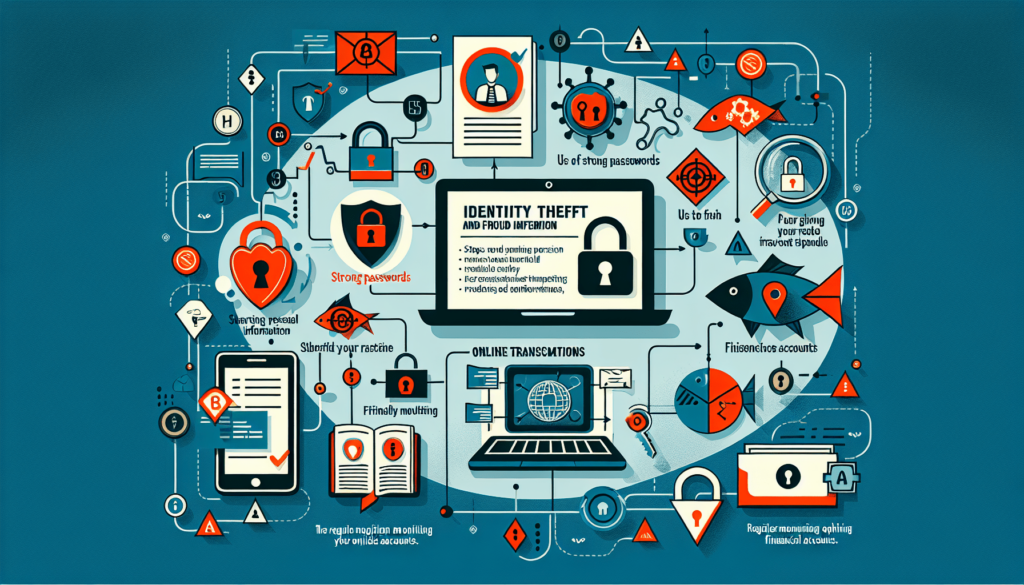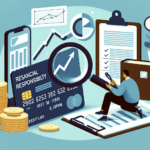In today’s increasingly digital world, it’s crucial to prioritize the protection of our personal information. With the rise of identity theft and fraud, it’s important to be proactive in safeguarding yourself from potential harm. From securing your online accounts with strong, unique passwords to regularly monitoring your credit reports and avoiding suspicious links and emails, there are several steps you can take to defend yourself against these threats. By taking the necessary precautions, you can minimize the risk and enjoy peace of mind in knowing that your identity is secure.
Secure Your Personal Information
In today’s digital age, it is more important than ever to secure your personal information to prevent identity theft and fraud. By taking a few simple steps, you can safeguard your sensitive data and protect yourself from potential harm.
Safeguard Your Social Security Number
Your Social Security number is one of the most valuable pieces of personal information that identity thieves seek. It is crucial to keep it safe and only disclose it when absolutely necessary. Avoid carrying your Social Security card in your wallet or purse, and never share it over the phone or email unless you are certain of the recipient’s identity. Additionally, be cautious of who you share your Social Security number with and verify the legitimacy of any requests for this information.
Protect Your Financial Information
Your financial information, such as bank account numbers, credit card details, and online login credentials, must be protected at all costs. Avoid writing down sensitive information and never store it in visible or easily accessible locations. Instead, consider using a secure password manager to store and generate strong, unique passwords for your various accounts. Be cautious when conducting financial transactions online and ensure that the websites you visit are encrypted and secure.
Keep Your Personal Documents Secure
Personal documents, such as passports, birth certificates, and tax returns, contain sensitive information that can be used by identity thieves to commit fraud. It is essential to keep these documents in a secure and locked location, such as a safe or a locked filing cabinet. When disposing of personal documents, such as bank statements or medical records, be sure to shred them thoroughly to prevent unauthorized access to your information.
Monitor Your Accounts Regularly
Closely monitoring your financial accounts is one of the most effective ways to detect and mitigate any unauthorized activity or potential identity theft. By regularly reviewing your bank and credit card statements, you can quickly identify any unfamiliar transactions and report them to your financial institution. Additionally, it is crucial to review your credit reports from the major credit bureaus at least once a year to check for any errors or suspicious activity. Taking advantage of account alerts provided by your bank or credit card issuer can also help you stay on top of any unusual account activity.
Check Your Bank and Credit Card Statements
Reviewing your bank and credit card statements on a regular basis is crucial to identify any unauthorized transactions or suspicious activity. By thoroughly examining each transaction, you can quickly spot any discrepancies and notify your financial institution to take appropriate action.
Review Your Credit Reports
Your credit reports contain a comprehensive record of your financial activity and play a vital role in determining your creditworthiness. By reviewing your credit reports from the three major credit bureaus – Experian, Equifax, and TransUnion – you can ensure that all the information is accurate and alert the bureaus to any potential instances of identity theft or fraud.
Set Up Account Alerts
Many financial institutions offer account alerts via email, text message, or mobile app notifications. By utilizing these alerts, you can receive real-time updates about activity on your accounts. This enables you to quickly respond to any suspicious transactions and mitigate the potential damage caused by identity theft or fraud.
Be Wary of Phishing Scams
Phishing scams are a common method used by identity thieves to trick individuals into revealing their personal information. These scams often involve fraudulent emails or phone calls that seem legitimate but are designed to deceive and manipulate unsuspecting victims. By familiarizing yourself with phishing tactics and taking precautions, you can protect yourself from falling victim to these scams.
Educate Yourself on Phishing
Understanding how phishing scams work is the first step in protecting yourself against them. Phishing emails often contain links to fake websites that mimic legitimate organizations, such as banks or government agencies. They may also request personal information or login credentials, claiming there is an urgent need for verification. By being aware of these tactics, you can spot red flags and avoid falling into the trap.
Use Strong Passwords
Using strong, unique passwords for all your online accounts is a crucial defense against identity theft. A strong password typically includes a combination of letters, numbers, and special characters, making it difficult for hackers to guess. It is also important to avoid using the same password for multiple accounts, as this increases the risk of your information being compromised if one account is breached.
Beware of Suspicious Emails and Phone Calls
Always exercise caution when receiving emails or phone calls from unknown sources. Be skeptical of any requests for personal information or urgent actions, especially if the communication seems suspicious or unexpected. Legitimate organizations typically do not ask for sensitive information over email or phone calls, so it is better to err on the side of caution and verify the authenticity of the request before sharing any personal data.

Use Secure Internet Connections
The internet has become an integral part of our daily lives, but it is important to be cautious when using it, especially for sensitive activities such as online banking or shopping. By following these guidelines, you can minimize the risk of your personal information being intercepted or compromised.
Avoid Using Public Wi-Fi Networks for Sensitive Activities
Public Wi-Fi networks, such as those in cafes or airports, are often unsecured, allowing cybercriminals to eavesdrop on your online activities. Avoid accessing or transmitting personal information when connected to public Wi-Fi networks, as your data may be intercepted by hackers. Instead, use a secure and private internet connection, such as a trusted home network or a virtual private network (VPN), when engaging in sensitive online activities.
Verify Website Security
Before entering any personal information on a website, it is crucial to verify its security. Look for secure connections, indicated by “https://” at the beginning of the website’s URL, and a padlock symbol in the browser’s address bar. This signifies that the website encrypts data during transmission, making it difficult for hackers to intercept and access your information.
Use Secure Payment Methods Online
When making online purchases or payments, use secure payment methods such as credit cards or reputable digital payment platforms. These options often offer additional layers of protection, such as fraud monitoring and buyer protections, which can help safeguard your financial information.
Protect Your Devices
In today’s connected world, our devices are a treasure trove of personal information. To prevent unauthorized access and protect yourself from identity theft, it is essential to take steps to secure your devices.
Keep Your Software and Antivirus Programs Updated
Regularly updating your device’s software, including the operating system and applications, is crucial for security. These updates often include important security patches that can protect your device from vulnerabilities and prevent potential attacks. Additionally, installing reputable antivirus software and keeping it up to date is an excellent defense against malware and other malicious software.
Use Strong Passwords on Your Devices
Just like with your online accounts, using strong passwords on your devices is essential. Set a password or PIN that is unique and not easily guessable. Consider using a longer passphrase, combining different characters, or even using biometric authentication methods, such as fingerprint or facial recognition, for an added layer of security.
Enable Two-Factor Authentication
Two-factor authentication adds an extra layer of security to your online accounts and devices. By requiring a second form of verification, such as a unique code sent to your mobile device, you can significantly reduce the risk of unauthorized access to your accounts. Enable two-factor authentication whenever it is available to enhance your device’s security.
Be Cautious with Personal Information Sharing
Sharing personal information online or on social media platforms can inadvertently expose you to identity theft and fraud. It is important to carefully consider what information you share and with whom.
Limit Sharing Personal Information on Social Media
Social media platforms encourage us to share personal information, such as our full name, date of birth, and even our current location. However, this information can be used by identity thieves to piece together your identity and carry out fraudulent activities. Consider adjusting your privacy settings on social media platforms to restrict access to your personal information and only share with trusted individuals.
Be Careful with Sharing Information Online
When filling out online forms or creating accounts on websites, be cautious about the information you provide. Only provide the necessary details required for the specific purpose, and avoid sharing sensitive information that is not essential. Additionally, be wary of sharing personal information in online forums, message boards, or other public platforms, as this information may be accessible to the masses.
Don’t Share Personal Information with Unsolicited Requests
Be skeptical of unsolicited requests for personal information, whether they come through an email, phone call, or text message. Legitimate organizations generally do not reach out and ask for personal information unless you have initiated the contact. If you receive a request that seems suspicious, independently verify the source before providing any personal details.
Shred Sensitive Documents
Properly disposing of sensitive documents is essential to prevent identity theft. Simply throwing them in the trash increases the risk of someone retrieving them and using your personal information for fraudulent activities. Shredding your documents is an effective way to ensure that your sensitive information is irretrievable.
Dispose of Documents Properly
When discarding personal documents, resist the temptation to throw them directly into the trash. Instead, shred them thoroughly to make it nearly impossible for anyone to piece them back together. This includes any papers that contain personal information, such as bank statements, credit card statements, medical records, and old bills.
Shred Documents Containing Personal Information
Investing in a cross-cut shredder is highly recommended to destroy your sensitive documents effectively. Cross-cut shredders produce small, confetti-like pieces, making it extremely difficult for anyone to reconstruct the shredded documents. Avoid using a traditional strip-cut shredder, as the long strips can potentially be reassembled.
Use a Cross-Cut Shredder
Using a cross-cut shredder provides an extra layer of security when disposing of personal documents. These shredders cut paper into small, indiscernible pieces, rendering them virtually impossible to reconstruct. Prioritize using a cross-cut shredder to ensure your sensitive information remains secure.
Protect Your Mail
Even in the digital age, physical mail can still be a target for identity thieves. It is important to take precautions to protect your mail and prevent unauthorized access to your personal information.
Collect Your Mail Promptly
Try to retrieve your mail from your mailbox as soon as possible after it is delivered. Leaving mail unattended for extended periods increases the risk of it being stolen or tampered with. If you are away from home, consider asking a trusted neighbor or friend to collect your mail for you.
Use a Locked Mailbox
Investing in a locked mailbox can significantly enhance the security of your incoming mail. Locked mailboxes require a key or combination to access, making it much more difficult for identity thieves to steal your mail or intercept any sensitive documents.
Consider a Mail Forwarding Service
If you frequently travel or have an extended absence from your residence, consider using a mail forwarding service. This ensures that your mail is securely redirected to a trusted address where it can be safely collected. Mail forwarding services can be particularly beneficial in preventing identity theft when you are away for an extended period.
Be Vigilant for Unusual Activities
Maintaining a vigilant mindset and staying alert to any unusual activities in your financial accounts or personal information is essential for early detection and prevention of identity theft.
Monitor Your Credit and Financial Accounts
Regularly monitoring your credit reports, bank accounts, and credit card statements is crucial to identify any unusual activity or unauthorized transactions. Keep a close eye on your account balances, transactions, and any unfamiliar charges. By promptly spotting any suspicious activity, you can take immediate action to prevent further damage.
Be Aware of Unauthorized Transactions
If you notice any unauthorized transactions or suspicious activity in your bank or credit card accounts, report it to your financial institution immediately. The sooner you report any fraudulent activity, the quicker the necessary actions can be taken to protect your accounts and minimize any financial losses.
Report Suspicious Activities Immediately
If you come across any suspicious activities or believe you may be a victim of identity theft, it is essential to report it immediately. Contact your local law enforcement agency and file a report. Additionally, notify your bank, credit card issuers, and credit bureaus so they can take appropriate actions and help protect your financial accounts and personal information.
Consider Identity Theft Protection Services
For added peace of mind, consider utilizing the services of an identity theft protection provider. These companies offer various features and tools that can help monitor and protect your personal information.
Research and Choose a Reputable Service
When considering an identity theft protection service, it is crucial to thoroughly research and choose a reputable provider. Look for companies with a proven track record in the industry and positive customer reviews. Avoid companies that make unrealistic promises or charge exorbitant fees.
Understand the Services Offered
Identity theft protection services typically offer a range of features, such as credit monitoring, identity monitoring, insurance coverage, and assistance in the event of identity theft. Understand what services are included in the plan you choose and how they can help safeguard your personal information.
Compare Costs and Features
Before selecting an identity theft protection service, compare the costs and features of different providers. Consider your specific needs and budget to determine which service offers the best value for you. Remember that prevention is key, but having a reliable partner to assist you in case of identity theft can provide invaluable support and resources.
By following these comprehensive steps to protect yourself from identity theft and fraud, you can significantly reduce your risk and enjoy peace of mind in today’s digital world. Stay vigilant, educate yourself on best practices, and take proactive measures to safeguard your personal information. With these efforts, you can minimize the chances of falling victim to identity theft and maintain control over your financial well-being.




